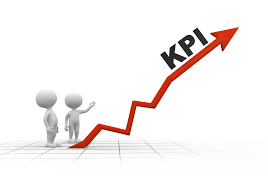What is Key Performance Indicators?
A KPI is a key performance indicator that measures how your company is performing at achieving a specific goal or objective. There are KPIs for every aspect of business, whether financial, marketing, sales, or operational. Key Performance Indicators (KPIs) in marketing are the most important items that are driving the success of the company.
Essentially, KPIs are measurable metrics that gauge overall performance over time. A great way to analyze and report on your KPIs is to create custom dashboards in your automation software.
When thinking about your marketing key performance indicators, there are a couple of things that should be evaluated no matter what metric you’re looking at:
- The source. If you have a certain metric that’s valuable to your business, knowing where it came from will prove to be highly important to get more of them.
- The content, form, page, etc. that, contributed to the creation of a valuable metric. For example, if all of your leads are converting on a single piece of content, it’s a reasonably good bet to say that other content like that will be successful in the future as well.
So now let’s get into exactly which metrics your business should be paying attention to!
Understanding Key Performance Indicators (KPIs)
Also referred to as key success indicators (KPIs), KPIs vary between companies and industries, depending on performance criteria. For example, a software company striving to attain the fastest growth in its industry may consider year-over-year (YOY) revenue growth as its chief performance indicator. Contrarily, a retail chain might place more value on same-store sales as the best KPI metric to gauge its growth.
At the heart of KPIs lie data collection, storage, cleaning, and synthesis. The information may be financial or non-financial and may relate to any department across the company. The goal of KPIs is to communicate results succinctly to allow management to make more informed strategic decisions.
Also Read Reasons Why No One is Reading Your Content and How to Fix the Problem
5 Key Performance Indicators
KPIs vary from business to business, and some KPIs will be more suitable for some companies compared to others. In general, five of the most commonly used KPIs include:
1. Revenue growth
A KPI called revenue growth is used to track whether sales are rising or falling over time. The amount of money your business makes over a specific period compared to the year prior is known as revenue growth. The revenue growth rate measures the month-over-month percentage increase in revenue. One of the most popular and significant startup KPIs is this one. The revenue growth rate offers a reliable indication of how quickly your business is expanding. Instead of tracking an absolute number (current revenue), which can be misleading if tracked alone, companies can measure comparative progress (month-over-month) by tracking revenue growth rate. The growth rate is helpful for founders, but investors are also interested in seeing it to assess the company’s current and future growth.

2. Revenue per client
The average revenue each wealth management client of the business generates is measured as revenue per client. The most popular and simplest KPI to monitor is revenue per client, a productivity indicator. Take your annual income and divide it by the number of clients in a straightforward calculation to determine revenue per client. Your RPC, for instance, would be $1,000, or roughly the industry average, if you generated $300,000 in revenue annually and had 300 clients. The average revenue per customer is a high-level KPI to gauge a company’s overall health, and it rises over time for healthy brands. A disconnect between product or pricing and your customer’s wants may exist if it decreases.
3. Profit Margin
The margin of gross profit KPI calculates your profit before expenses on each dollar of sales. The difference between production costs is taken into account when calculating this ratio. If your cost of revenue generation exceeds your revenue, you have a negative profit margin, and your company is doomed to failure. Except if you’re extraordinarily wealthy and have deep pockets. If not, pay close attention to your financial activities. Where do you spend your money? Which expenses are unmanageable? Costs that are essential or not? Which costs contribute to revenue production? Remember to consider the revenue side of the equation. Are the prices you’re asking for this or that fair? Does your pricing strategy require any changes? Are your shows outdated?
4. Client retention rate
Repeating business from customers is a sign of quality work. Switching to a rival is simple when faced with not-so-good customer service in the current saturated market. This is especially important in sectors where repeat purchases are frequent. On the other hand, you should invest more time and energy in nurturing if customers prefer to purchase goods or services from other sources. The percentage of customers you keep on board is known as retention, and it’s essential to long-term success. It measures how well you keep your brand promise, making it the most crucial KPI.
The average CRR for the studio sector is around 72%. What, then, do you do to raise that figure? Along with ongoing sales, emphasize marketing strategies, tactics, messaging, time, and expenditure. Retain your clients by:
- Make good on your promise. Please ensure everyone who works in your studio, whether full-time employees or freelancers, has embraced your vision.
- Recognize the reasons clients are leaving. Organize exit interviews. Tell them you value what they have to say.
5. Working Capital
You require money to run your business. Working capital is the term for this money, which enables you to meet your immediate financial responsibilities and maintain day-to-day operations. Knowing your working capital ratio will assist you in strategizing your upcoming tactical actions, such as expanding your team or purchasing new equipment. Additionally, it will notify you when financial support is necessary to keep your business operating. Working capital is determined by comparing the company’s current assets to its liabilities. The formula helps calculate the working capital: Current Assets minus Current Liabilities equals Working Capital.
If your assets outweigh your liabilities, you have positive working capital, which means you have enough cash to pay all of your debts and still have money left over after covering your liabilities. On the other hand, you have negative working capital if your liabilities exceed your assets. That indicates that you lack the funds necessary to meet your financial obligations. You can learn important information about the state of your company and the effectiveness of your business strategy from both positive and negative working capital. For instance, you need to put more money into your company if your working capital is extremely high and your assets vastly outweigh your liabilities. In that case, you might develop a business plan to use some of your working capital to grow or find new clients.
Conclusion
When properly used, these critical financial performance indicators can guide your efforts to accomplish your business goals. They will reveal information that might otherwise not be looked at, hopefully aiding your company’s faster and more efficient growth. A good KPI provides accurate, objective information about a project’s length. It offers a way to track and evaluate variables like effectiveness, caliber, timeliness, and performance while also tracking performance over time. A KPI’s main objective is to assist management in making better decisions.
















